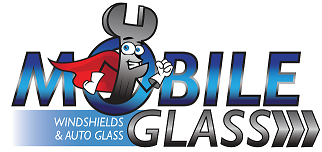Windshields are the most common auto glass part. Because of this, windshields also have the most options. The first thing to consider is whether you want OEM (dealer only) or aftermarket windshields. We stand behind all windshields we sell and install, so quality is high no matter which you choose. However, you get what you pay for, so in the end, the choice is yours. Another option choice in almost all cases, although it’s not a noticeable option, is selecting either a blue or green shade. The “shade” is the color band across the top of the glass that helps shield sunlight from the drivers eyes. Below are each of the windshield options and what it means to you.
- OEM (Original Equipment Manufacturer): The same manufacturer that made the windshield part the vehicle originally had. Same stamp, tag and markings. These windshields are considered the highest quality, however the difference in OEM and OEM quality/equivalent windshields are indiscernible. These parts can only be purchased from the dealer or a distributor of the OEM brand. Many auto glass companies mislead customers when it comes to OEM. The best way to know if you are getting the part you want is to look at the markings on your windshield (stamp) or ask who made the windshield and where it was purchased.
- Aftermarket (or OEM equivalent): If you don’t ask, you probably will receive an aftermarket part unless your vehicle is very new and there is not yet an aftermarket part available. There are two types of aftermarket parts: “L” brand and “G” brand. L brand is of higher quality, however not the original part. G brand is generic and, cost-wise, the cheapest windshield. Aftermarket windshields look and function just as the OEM windshield does for all intensive purposes. However, the testing and inspection process of aftermarket parts is questionable.
- New windshield: 99% of windshields installed are new. We only recommend using a new windshield.
- Used Windshield: Just what is sounds like. A windshield from another vehicle. This part was already used before. It is very difficult to remove a windshield without breaking it and cleaning the windshield properly for placement in another automobile. We don’t recommend used windshields or salvage windshields.
- Laminated: All windshields today are laminated. This ensures the glass won’t break apart and hurt the vehicle’s driver/passengers. Laminated glass is a “sandwich” of glass, plastic and glue. Both the inner and outer layer of the windshield is glass surrounding a center piece of plastic and is adhered together by glue. This is why a baseball bat will not easily pierce the windshield without many blows.
- Shade: The top part of the windshield that is painted to keep sun and glare from the drivers eyes.
- Tint: Color embedded in windshield glass to help reduce UV radiation (sunlight) often densely placed at the top of the windshield. This is the noticeable “green” or “blue” band across the top of almost every windshield, however it’s also found throughout the windshield glass and is just not as easy to see.
- Bullet-resistant: A thicker and heavier windshield glass that’s able to resist light firepower from pistols/handguns.
- Bulletproof: A windshield able to withstand the firepower from light to medium firepower even at point blank range. Very heavy, thick windshield glass that will require a complete redesign of your vehicle in order to install. NOTE: No need to install a bullet proof windshield without bullet proofing your entire car.
- Rain sensor: A special attachment that communicates with the car’s computer to turn on, off and regulate the speed of windshield wipers. Requires a completely different rearview mirror bracket and other attachments. Windshields with rain sensors are completely different and are typically more expensive than other windshields.
- Condensation sensor: A windshield attachment that senses when your glass has condensation and heats up to reduce the condensation buildup. Similar to a rain sensor.
- Heated: Similar to a condensation sensor, heated windshields have small wires throughout the glass that heatup when activated, keeping the glass from icing up or fogging.
- Heated Wiper Park Area: Heating elements inside the windshield glass by the wiper park area prevent windshield wipers from icing up.
- Heads-up display: Holographic display projected on the windshield.
- Electrochromic rear view mirror: Electronic rearview mirror with digital compass, temperature or self-dimming rear view mirror electronics. Requires an entirely different windshield due to the attachment bracket required.
- Solar-coated: Coating on the windshield glass that keeps UV radiation from penetrating the glass.
- Acoustic interlayer: Special coating designed to keep outside sounds out and inside sounds in.
- High-beam dampener: Special option to reduce glare when approaching drivers leave high-beam headlights on.
